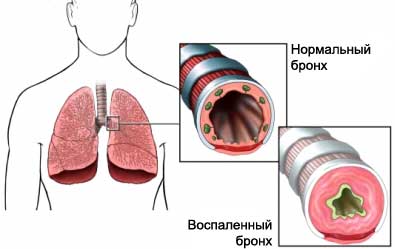Berylliosis – Beryllium disease
Description Berylliosis
Beryllium is an occupational lung disease. It occurs in people, working with beryllium. Berylliosis usually suffer only people, that are allergic sensitivity to beryllium.
Beryllium – a metallic element, which is located in the rocks, coal, soil and volcanic dust. It is also used in some industries.
There are two types of berylliosis: acute and chronic.
Reasons Berylliosis
Beryllium is a result of inhalation or other impacts (eg, through open skin wounds) beryllium dust or fumes.
Acute berylliosis is caused by brief exposure to beryllium. Today it is very rare. Chronic berylliosis is caused by prolonged exposure to beryllium. It is more common, The sharper, but also relatively rare.
Risk Factors Berylliosis
The primary risk factor for berylliosis is working in place of beryllium processing. Industry, Beryllium is used includes:
- Aerospace;
- Electronics;
- Fiber optics;
- Extraction of beryllium;
- Nuclear weapons and reactors;
- Laboratory technology;
- Dental appliances;
- Production:
- Mirrors;
- Putters;
- Microwave Equipment;
- Bicycle frames.
Symptoms Berylliosis
Symptoms of acute berylliosis come on suddenly and quickly. The main symptoms are signs of severe pneumonia. These include:
- Cough, perhaps, with bloody sputum;
- Chest pain;
- Breathlessness;
- Weight loss.

Symptoms of chronic berylliosis develop slowly. Sometimes, symptoms may not appear for many years after exposure to beryllium. Chronic berylliosis is two major pathological changes:
- Scarring of the lung tissue;
- Formation of granulomas (inflammatory masses) lung (Firstly) and other organs.
In severe cases, berylliosis may lead to heart failure.
Symptoms of chronic berylliosis may include:
- Dry cough;
- Weight loss;
- Fatigue;
- Chest pain;
- Breathlessness.
Diagnosis Berylliosis
The doctor will ask about your symptoms and medical history, and perform a physical examination and prescribe analyzes, which may include:
- Chest X-ray;
- Pulmonary function tests – to assess the ability to breathe normally;
- Test with beryllium lymphocyte proliferation (BeLPT) – blood test, which defines an allergic sensitivity to beryllium;
- Biopsy legkogo – selection lung tissue using a bronchoscope (a thin tube, which is inserted into the airway).
Symptoms of chronic berylliosis may appear several years after exposure. Thus, all employees, that, perhaps, have been exposed to beryllium should undergo tests BeLPT, even if they are asymptomatic.
Treatment Berylliosis
The most important step in treatment is to stop exposure to Beryllium beryllium.
For acute berylliosis They can be assigned to corticosteroids, usually, prednisolone. This drug helps to reduce lung inflammation. If timely assistance to the majority of patients recover completely. However, in extreme cases, without emergency, acute berylliosis can be fatal.
In the treatment of chronic berylliosis Corticosteroids can be used, if you develop symptoms of lung disease. However, these drugs do not cure scars, which have already appeared in the lungs.
Prevention Berylliosis
Avoiding or limiting exposure to beryllium is the best way to prevent berylliosis. To make it, Follow these steps::
- Ensure good ventilation in work areas, where there is beryllium dust or fumes;
- Wear a dust mask when working, which could result in exposure to beryllium;
- Avoid eating, drinking or smoking in places, which uses beryllium;
- When working with beryllium do not wear casual clothes;
- After working with beryllium, take a shower and wash your hair;
- If you are exposed to beryllium, Consult with your doctor about the best way to avoid Berylliosis. Maybe, you have to go BeLPT blood, to detect changes in lung function.
